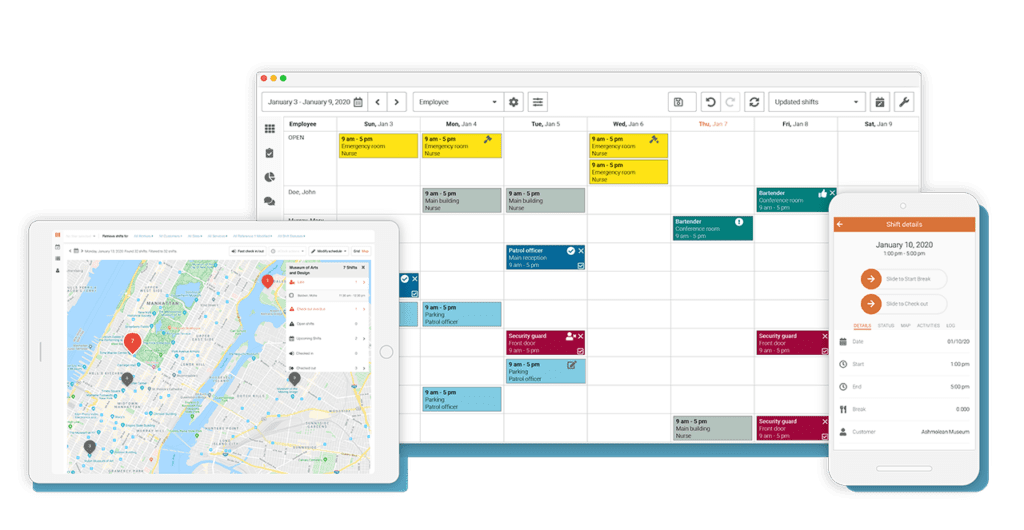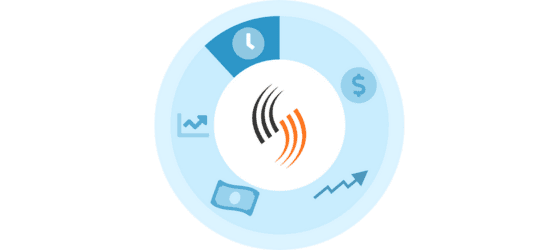“Give me six hours to chop down a tree and I will spend the first four sharpening the axe”
– Abraham Lincoln
This quote by Abraham Lincoln applies to your business organization, too! Every business organization spends time expanding their company, increasing revenues, and decreasing costs. Employers spend hours searching for the right workforce to take the organization to the next level. Despite the possibility of economic downturns, employee layoffs, or cost-cutting measures, every company remains prepared to finance its business as needed.
Unfortunately, the above solutions are not the best way to show your preparedness. The workforce is the axe for your company, and chopping any tree is faster when the axe is sharp. Without employees, there is no potential for productivity or sales. That is why you shouldn’t overlook the importance and application of time collection solutions.

The first aspect of effective workforce management consists of time and attendance. Businesses can save money by improving employee attendance, reporting, and time collection. Instead of laying off employees or cutting work hours and budgets, we can do this. Employers often overlook issues such as time theft and buddy punching, costing companies much more than they realize.
43% of hourly workers surveyed admit to exaggerating the amount of time they work during their shifts. One-quarter of respondents say they report more hours than they worked 76 to 100 percent of the time. Consequently, a time and attendance system is necessary to avoid these issues.
A time and attendance system serves as the means for collecting employee time in an organization, offering a range of benefits.
Benefits of effective time collection:
Spend less time on payroll
Employees can clock in for attendance instantly and efficiently using time and attendance software. Employees and the HR department have fewer conflicts concerning payrolls and can spend time doing their respective jobs instead. As much as 70% of your organization’s time calculating payroll decreases with time & attendance software.
Error-free payroll
As mentioned above, clocking in and out is subject to employee activity. By automatically tracking time & attendance, employers can ensure employees adhere to their contracted hours. Any time & attendance software can identify and calculate overtime based on company policies.
Consequently, the system automatically calculates staff pay and overtime based on the company’s pay and overtime rates. As a result, you can reduce manual calculations, mitigating the risk of human error in your payroll.
Prevent time theft from buddy punching.
Buddy Punching is the act of clocking another employee’s timecard on their behalf. Consequently, employees take advantage of loopholes in the clocking-in and attendance system to receive payment for hours they didn’t work. The American Payroll Association estimates that over 75% of businesses lose money from buddy punching. This and other forms of time theft are more likely because of outdated clocking-in or time & attendance systems.
Reduced human error in bookkeeping.

In bookkeeping, transposition errors are one of the most common mistakes with manual data entry. While unintentional, such transposition errors can be costly for the company. Firstly, they make it difficult for the accountants to identify the error if it’s single-entry bookkeeping.
Secondly, any transposition error takes much longer than any other data entry problem. The right time & attendance software eradicates such errors by automatically entering data.
Spend less time on paperwork.
Paperwork is time-consuming. Most employers and employees alike hate to see stacks of paperwork pile up. Unlike Celayix’s time and attendance software, paperwork is often disorganized.
The time and paper consumed are costly in the long run and will frustrate employees. What Celayix offers here is less time and energy used on paperwork for your organization.
Effectively follow legal requirements and monitor breaks.
Following legal requirements can be challenging when monitoring time for every employee is problematic. Legal requirements usually include providing overtime pay, record keeping, and scheduled breaks. A manual time and attendance system would not keep track of all these requirements for all your employees.
This opens your organization to various lawsuits in the future. To stay on the right side of the law, you must monitor these breaks effectively and follow legal requirements. An effective time and attendance system allows employers to identify such issues with a simple button press, reducing the likelihood of potential lawsuits.
To understand the benefits of collecting time accurately, let’s look at different ways employers can gather each employee’s time.
Methods of Time Collection
Mobile Apps
Target audience: Employees who are familiar with technology. Also beneficial for employees working in remote locations.
Purpose: Mobile Apps provide a quick and convenient solution to access work schedules and clock in and out without hassle.
Benefits for the company:
Provides real and accurate shift details for the employers, unlike the manual traditional logging system. Managers automatically see each employee’s hours worked, which helps them export the data for their payroll system with ease.
A 2017 study by the Pew Research Center found that 77% of Americans have a smartphone, up from 35% in 2011. The same survey found that 88% of Americans used the Internet in 2017 compared to 52% in 2000. As more people use smartphones and the internet, organizations will continue to find this option helpful in the future.
Extra perks:
- Available 24×7 via the app as well as the browser
- Highly reliable (no errors in time collection)
- No inaccurate data resulting in no time theft
- Administrators can access the stored time & attendance data to discuss time and payroll disputes.
- Option of using geofencing technology: Through GPS, the app makes sure the employees are at the right place at the right time,
- Smartphones are not mandatory; providers have web versions available, too!
Time Clocks

Purpose: Helps collect the time of each employee consistently. Appropriate for companies that do not require other additional features for employee scheduling and communication.
Benefits for the company:
- Time clocks are available in various models, from a cheap and simple model to the newer, slightly more expensive yet reliable model. Companies can decide on which time clock fits perfectly for their organization.
- By using facial scans to verify attendance, new biometric time clocks decrease the possibility of buddy punching and time theft.
Dial-in Systems
Target audience: Companies where internet or smartphones are impossible; employees generally find smartphones unnecessary or too expensive.
Purpose: A simple system devised to clock in and out from work through voice commands. The system instantly sends the time to the managers to ensure all shifts are checked and on time.
Benefits for the company:
- Employees can check into shifts without needing to call the administrator.
- Check-ins are collected, ensuring easy payroll and billing information is collected quickly and efficiently without room for error.
Online Timesheets
Target audience: Employees who want autonomy and control in confirming time attendance.
Purpose: Online timesheets are ideal for organizations that require employees to confirm their work hours and obtain managerial approval.
Benefits for the company:
- A better alternative than traditional timesheets is reducing any opportunities for time collection data to get misplaced.
- Supervisors need to approve the hours submitted by employees, resulting in less time spent on attendance and payroll tasks.
Time and attendance are critical business functions. Employers who do not track or manage time and attendance activities are vulnerable to unnecessary costs. By investing in the right time and attendance system, you invest in your company in more ways than one.
The money saved from efficiently managing employee time and attendance activities will more than offset the investment cost. Celayix’s time and attendance solutions can assist in reducing payroll errors, saving both time and money while also ensuring the safety and satisfaction of employees. If you’d like to hear more about our solutions, get in touch with one of our Solutions Advisors today!






